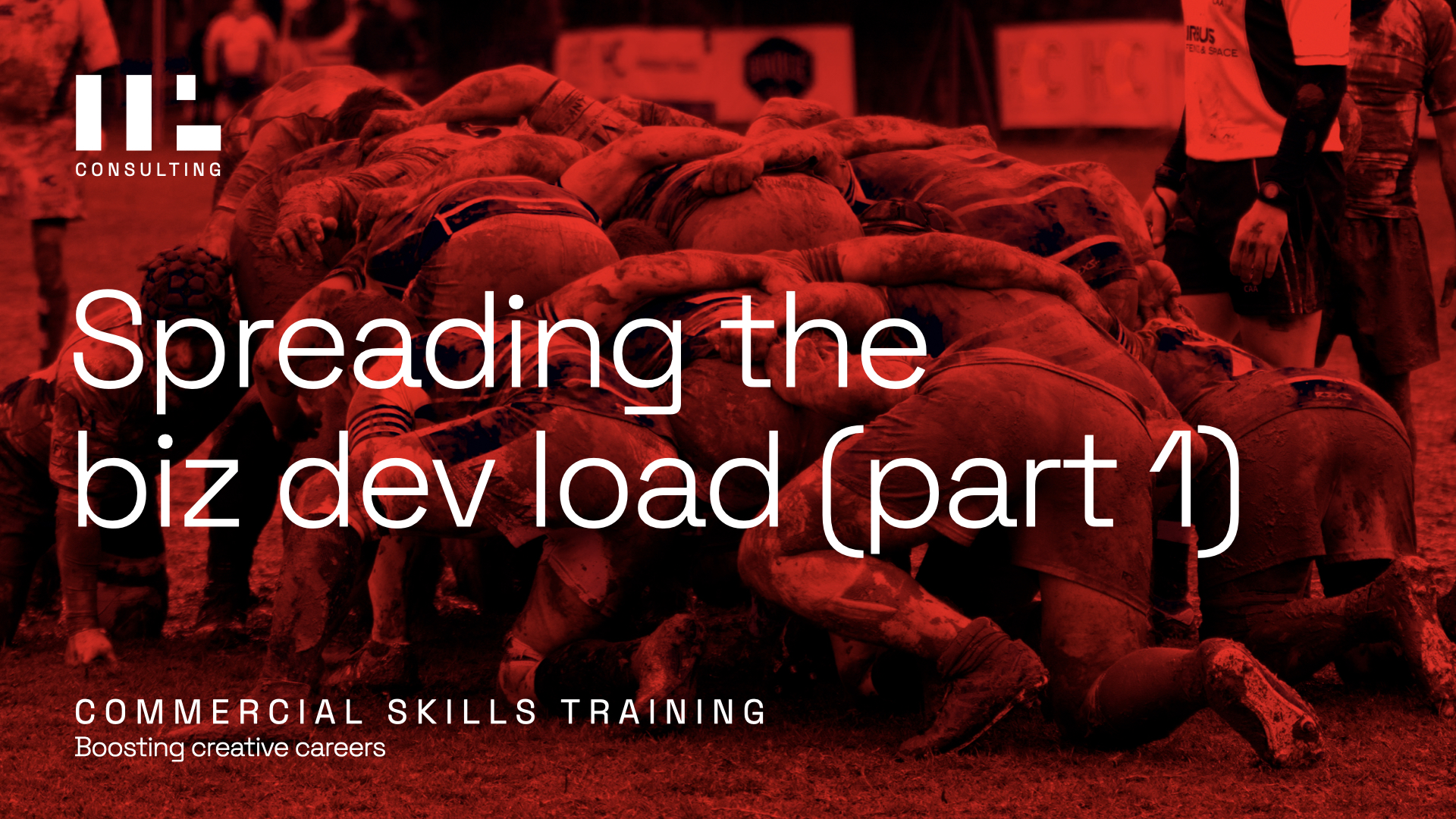- Jun 26, 2025
Spreading the biz dev load (part 1)
Business development is the lifeblood of any company selling creative services.
You may think it’s creative quality, or company culture. It’s not.
Nothing else matters if work isn’t coming in. Put another way, if you’re not winning work, everything else is like rearranging the deckchairs on the Titanic.
But it’s tough. And slow. You throw yourself into a new activity, don’t see fast results, and get discouraged.
The ‘gestation period’ of business development can be years.
Because business development is so difficult, we seek easy solutions. I think I tried them all when I was running my own design consultancy. Here are a few:
Big hitters
Seasoned new business pros with their ‘little black book’ of contacts. They promise they’ll bring work with them, but in my experience, it rarely materialises. Ultimately, they aren’t the person at an agency that a client buys.
In fairness, we give these people an impossible task. We invest a lot in them, then leave them in the corner and expect them to handle all the business development by themselves.
You know it won’t deliver immediate results, so you give it six months. Then a year. But after 18 months, it’s time for them to move on. You become another entry on their lengthy résumé/CV.
External lead generators
We were given an Account Manager. They worked remotely (before Covid), had a company email and a fake name (don't ask me why!) – I think he was called 'Ian'.
No matter how many times we briefed our team members who answered the office phone, on the rare occasions we got an enquiry, it went like this:
Prospect: “Could I speak to Ian, please?”
Team member: “Sorry, nobody called Ian works here.”
Prospect: "Oh, OK, bye then.”
It felt disingenuous. Because it was disingenuous. What was I thinking?! These people didn’t understand us, nor the value we added to our clients’ businesses.
They were incentivised by securing meetings. I soon learnt that a bad meeting is a lot worse than no meeting.
The straw that broke the camel’s back was when three senior team members spent a full day travelling to an in-person meeting. Only to find the prospect thought we did something completely different.
Poor qualification and a complete waste of time.
PR agencies
Lovely people – a good extrovert balance to us often introverted designers.
They got press releases of our latest projects into digital and physical publications. They helped us organise client events, too.
They tried to write on our behalf, but it never felt quite like us.
I’m sure their work helped build our company profile and awareness. Valuable, but a bit detached from the conversion of new business.
Closer to home
I’m not saying that these solutions can’t work, nor that they don’t have their place. Neither am I putting (all) the blame for a lack of success at their door. You get out what you put in and all that…
But I’ve concluded that outsourcing, or assigning BD responsibility to a chosen few – usually the Principals – is not the best approach.
It’s also a bit of a cop-out for everyone else. They become accustomed to someone doing business development for them. They expect a steady stream of exciting new work to be simply served up.
In today’s world of efficiencies, this feels like an outdated model. It also seems short-sighted. What happens when the people working on BD aren’t around? Either temporarily or permanently when they exit the business?
I believe that at small to mid-sized independent agencies, more team members should put their shoulder to the new business wheel. Making a more direct contribution to revenue generation.
My experience when growing my design consultancy supports my conclusion. I found that my best business development resources were already on the team. So I invested in nurturing their commercial skills.
Clients buy people as much as anything else – maybe more so. Team members who take the brief, run projects, and deliver great work automatically generate credibility and trust. When you build their commercial awareness, that trust leads naturally to sales.
The people who ended up winning the majority of our work were senior to director-level team members. They had deep expertise in our practice and could talk confidently and knowledgeably about it. Some were Client Service people, but many were Designers.
Next week in part 2: How to develop your team’s commercial skills, and the benefits it brings.
I built a 100-person international design consultancy, before selling it.
Now I work independently, providing:
GROWTH ADVICE: Invigorating creative leaders
COMMERCIAL SKILLS TRAINING: Boosting creative careers
